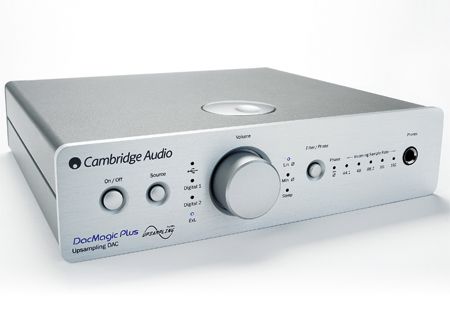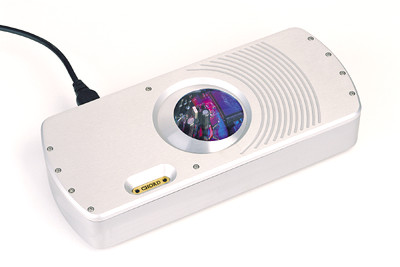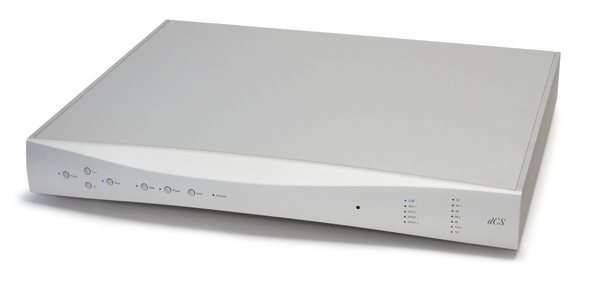When Naim Audio released its first standalone digital-to-analogue converter towards the end of the first decade of the new century, it raised some eyebrows. The company stated that it wouldn’t be worthwhile to do one until it could provide something technically novel, which it did. The £1,995 Naim DAC was created with jitter in mind and was created almost entirely in-house. At a period when many competitors were repackaging generic chipsets, this demonstrated Naim’s sincerity. It used a (then) very fast and powerful SHARC digital signal processing ‘brain’ running Naim authored code, designed by Naim’s Steve Sells and Hjalmar Nilsson – whose other notable work surfaced in the DSP used in the Naim for Bentley project. Instead of placing the digital domain in the hands of third-party manufacturers, this allowed the freedom to take full control of it.
The connection between the transport and DAC has always been a concern with separate transport and DAC; the DAC has to recover the clock from the S/PDIF stream, which is prone to timing problems. The data in the Naim DAC wasn’t directly retrieved from the S/PDIF signal; instead, it was read in and stored in solid-state memory before being timed back out to the DAC chips using a fixed-frequency local master clock. The DAC can change its clock speed in response to the pace at which data enters it. The SHARC DSP chip evaluates the data rate and selects one of ten precisely established master clocks to transport the data to the DAC.
The data entering the DAC chips is thus totally segregated from the input jitter, according to Naim. Only in exceptional circumstances would none of the Naim DAC’s configurable master clocks be closely enough matched to the incoming data rate, necessitating the usage of an asynchronous sample rate converter (ASRC). The source is oversampled to the highest frequency available using integer oversampling; for example, a 44.1kHz CD is oversampled 16 times. The DAC chips itself are two mono, true multi-bit Burr-Brown PCM1704Ks, which are used in all Naim high-end CD players, including the CD555, and can run at 25MHz, allowing sample rates of up to 768kHz.
From an electrical standpoint, circuitboard arrangement is given thorough attention, as one might anticipate. The 210 VA toroidal transformer serves 26 regulated low impedance supplies, and star earthing is used widely. The use of a dedicated supply for the master clock circuits increases power supply isolation when the external PSU upgrade option (XPS or 555 PS) is used with the Naim DAC. It also has a larger toroidal transformer and reservoir capacitors, and the DSP is powered by the Naim DAC transformer, giving the analogue section even greater separation.
The circuitry was also created with mechanical noise reduction in mind (i.e. vibration). The starting point is a strong aluminium chassis with 3mm-thick panels, with the fiberglass printed circuit boards only fastened to the chassis at certain spots and sitting on pillars to prevent energy transfer. The power supply PCB is separated from the main PCB to isolate vibrations associated with reservoir capacitor charging. Filter capacitors for the analogue stage are fitted to reduce microphony.
The Naim DAC was also out of the ordinary on the outside, with a variety of connectivity choices, the most noteworthy of which being (at the time) the USB port. It was also the first Apple-certified high-end DAC, allowing full digital playback from iPods via their docking connector, which fed the Naim’s USB input. Front-mounted on the DAC are ‘transport’ controls for the iPod, which also operate with the Apple Remote. The DAC’s two type A USB inputs can also be used to play USB memory files with music up to 768kHz sample rates (one on the front panel, the other at the rear). However, it will not play music directly from PCs through USB; Naim claims that this is too noisy for quality sound, and recommends utilizing an optical digital feed from a USB soundcard instead. Eight S/PDIF inputs (two BNC, two RCA, and four EIAJ optical) are also included.
At the time, I described it as a highly current, contemporary-sounding instrument that lacked romance, intrigue, or euphony. It has a tonally dry, tight, solid, and propulsive sound, with dark silences and a bright, shimmering upper midband when needed. The midband has an ice clarity to it; everything is picked out in a cool, unromantic way; this isn’t to say it’s frigid or uninteresting; it just means the Naim isn’t trying to enchant or captivate the listener. In the best conceivable way, it’s brutally honest.
It doesn’t sound deconstructive, while being highly detailed; it does really hi-fi things, but not in an overtly hi-fi way. The vocals are handled superbly, particularly in terms of rhythmic phrasing and dramatic accenting. Although the music is delivered with remarkable clarity, the Naim has a strong emotional impact. The bass notes come and go on a sixpence, the midband is crisp and open, and the treble is ethereal. Clarity, clarity, depth, spaciousness, and natural musicality are all significantly superior to comparable DACs from the time. Although you can get a better deal for £2,749 nowadays, it’s still a terrific product and a secondhand value for under a thousand pounds…








